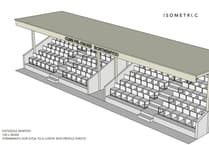Letter to the Editor: Like the author of the letter What kind of person shoots birds? (Cambrian News, 28 December)) I feed birds in my garden and I have also shot woodcock for the table. In recent years I have worked with the Game and Wildlife Conservation Trust (GWCT) ringing and tagging woodcock so that we can learn more about the population dynamics of the species.
Stable Isotope research has shown that well over 95 per cent of woodcock shot in the UK are from the over-wintering Russian and Scandinavian population estimated by the IUCN to be ‘Of Least Concern’. There are very few, if any records of woodcock breeding in areas of the UK such as Wales and southwest England where huge numbers of these birds overwinter and most shooting pressure occurs. So, purely from a conservation perspective, experts on the woodcock conclude that shooting in these areas has an insignificant impact on the species.
Recent research by GWCT has also pointed to several drivers other than shooting that are causing the decline in our resident breeding woodcock where they occur. Probably the most significant after climate change is the poor state of our woodland which has declined in quality from 21 per cent coppiced, 28 per cent scrub and 51 per cent closed canopy in 1947 to 98 per cent closed canopy in 2007. (Hopkins & Kirby 2007) The resultant lack of understorey is causing the decline of many species of woodland bird, not just woodcock. It is worth noting that some of the best remaining examples of proper woodland management in the UK happen on shooting estates, as has been recognised by the RSPB and other conservation NGOs.
Within 10 miles of Aberystwyth there are several examples of shoots that since the late 1960s have also planted large areas of woodland for game and wintering woodcock from which they take a sustainable harvest each winter. A walk in these woods in the spring illustrate the reason two in particular have been given conservation awards for the biodiversity gain this provision and ongoing management of woodland has brought to our local landscape. I find it hard to understand why these actions motivated by enlightened self — interest might be described by some as ‘psychological inadequacy’.
Owen Williams,
Trefenter




